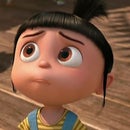Introduction: Large Cardboard Dinosaur Skeleton
This project is perfect for rainy weekends and will use up any cardboard box you might want to get rid of.
It is inspired by 3D wooden animal puzzles that you can pick up from charity shops, or that you may already have. This example is for dinosaurs fans, and will make a great decoration for Halloween or in a dinosaur-themed bedroom, with its 55cm height and almost 1 metre from head to tail!
Please note: This project involves the use of blades, so will require adult supervision and help for younger makers.
Supplies
3D wooden animal puzzle (here, a dinosaur skeleton)
Lots of cardboard!
Scissors, Stanley knife
Masking tape
Access to one of those 3 options:
1. scanner/printer
2. photocopier
3. projector
Optional: wooden dowels, glue, decorating materials (tissue paper, fabric, yarn, spray paint etc.)
Step 1: Prepare the Template
Prepare the template from your wooden puzzle. If you've bought the puzzle new, use the layout provided on a piece of paper. If you already have a puzzle, take it apart and trace the pieces on paper (!! Be careful to note matching notches for easy assembly !!)
Once you have a drawn template, we want to make it as big as possible (determine from your available cardboard how big you can go; this example is using a 400% zoom on the paper template), by using one of the following methods:
Option 1
Using a scanner, make a copy of your original template and enlarge it using a photo software. Print.
Option 2
Using a photocopier, choose the enlarge setting; set to the desired zoom and copy. Note, you will have to copy multiple parts of the template as it won't fit on one page, and you might have to match up parts of pieces together at the bigger size.
Option 3
If you have access to a projector, project the template directly onto the cardboard and trace the pieces out. Skip the next step if this is your chosen option.
Step 2: Prepare the Pieces
Next, cut out the pieces from your enlarged paper template and arrange then on a flattened cardboard box. Tape them roughly in place with masking tape.
Tip: Depending on how large you're making your 3D animal, you might have to increase your cardboard thickness by sticking several layers together (spray on glue might work best in this case), to make the final sculpture sturdy. Note that if you don't increase the thickness, you will have to reduce the size of the slots before you cut them out so that the pieces fit snuggly together.
Step 3: Cut the Pieces
Using scissors and a Stanley knife, cut the cardboard roughly around each piece, then adjust to the precise shape. Make sure you keep a reference of the slot markings for easy assembly.
Step 4: Assembly
Follow the instructions, or your own markings to assemble your 3D cardboard puzzle. If the notches are too big for your thickness of cardboard, fold small pieces in the remaining slot space to secure the pieces in place. You may use some glue as well.
Optional: Add wooden dowels along the inside of legs to make the structure sturdier.
Step 5: Enjoy!
Roar! Now decorate your cardboard sculpture however your wish: you can spray-paint it, glue colourful tissue paper to it, stick on some pompoms,... The possibilities are endless.

Participated in the
Cardboard Speed Challenge











